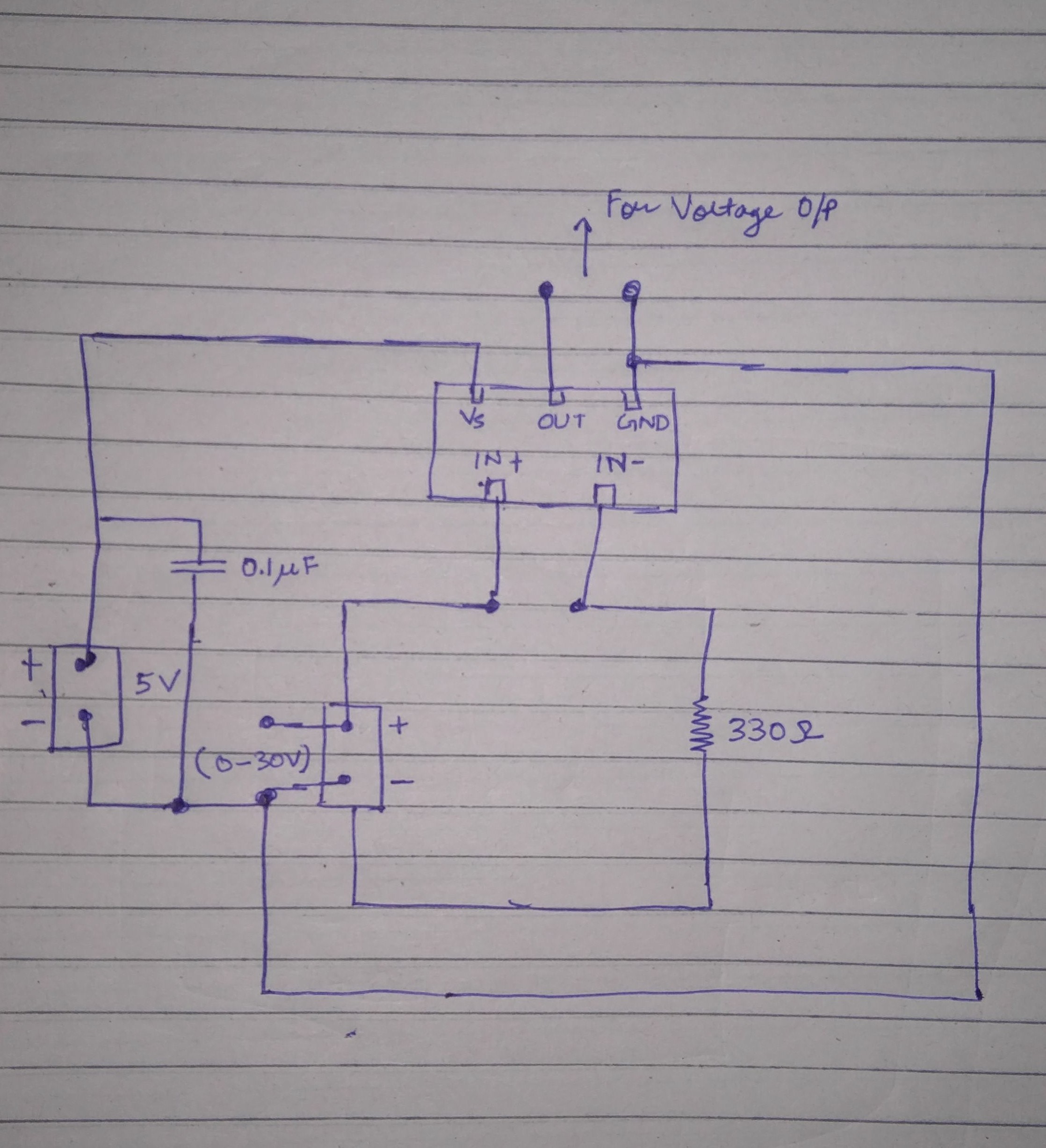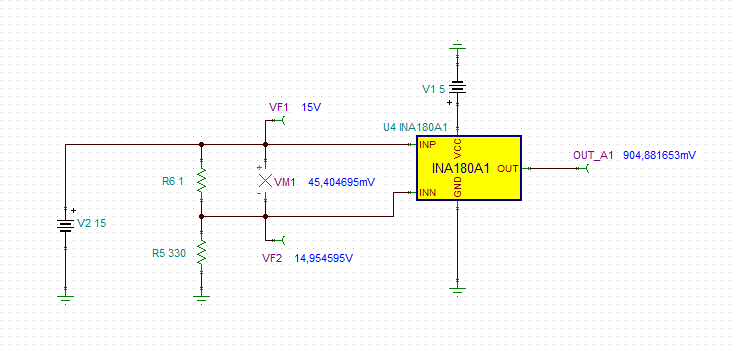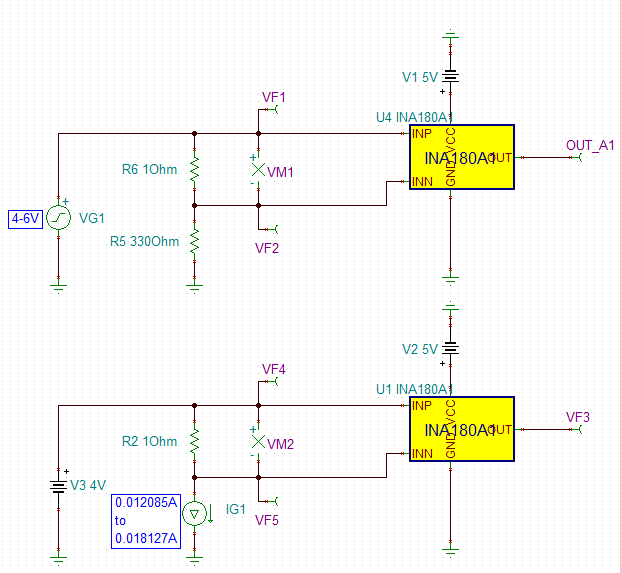Other Parts Discussed in Thread: INA181, INA180, TINA-TI
I am using INA181 current sensor. I am facing the problem that it is not giving the desired output. On varing the Input Supply the output is not changing. On giving a few mA current, the output gets saturated to a value. I don't if my circuit connections are wrong or what's the problem. Someone please resolve my issue.



